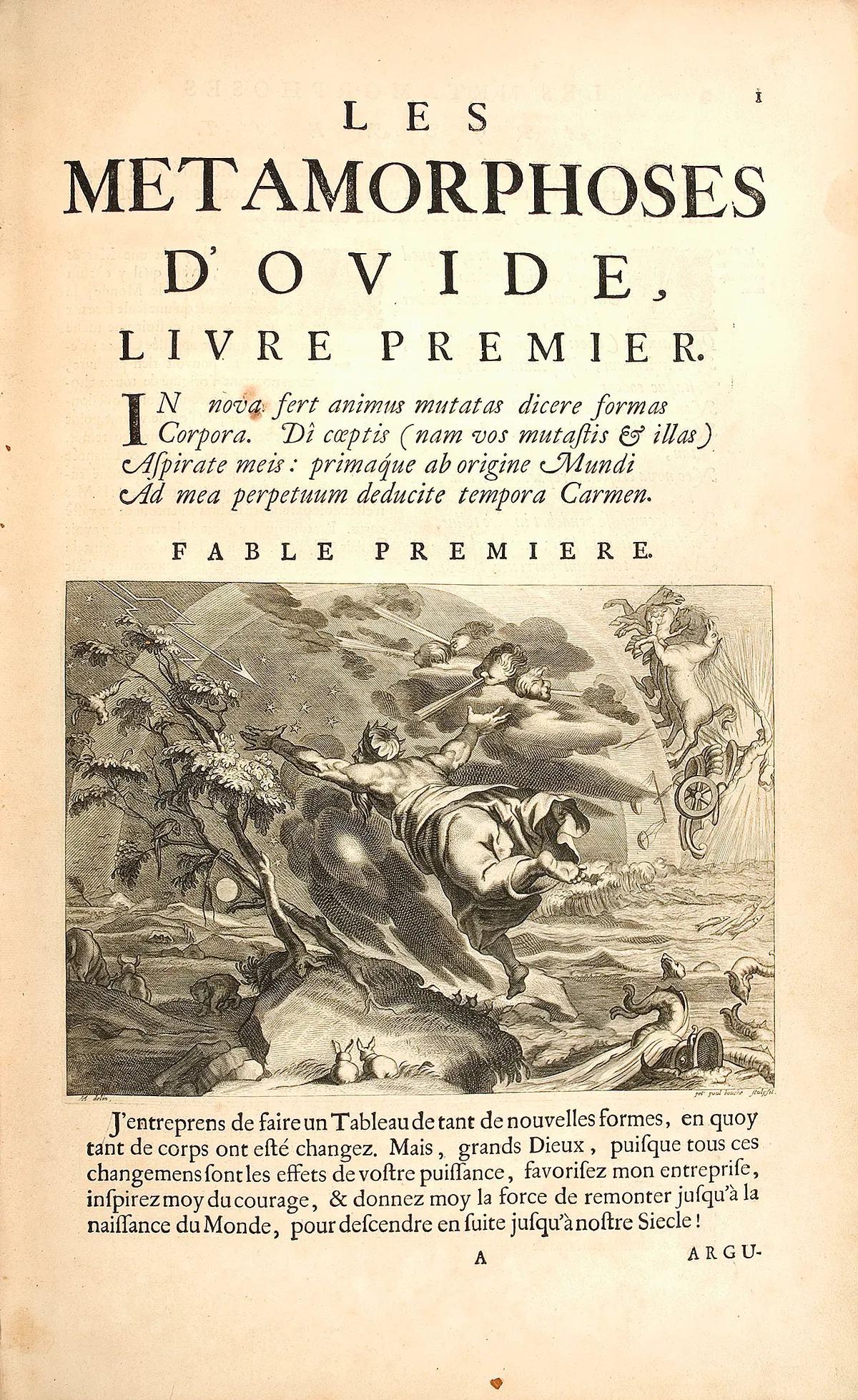In 8 AD, the poet Ovid found himself in a bad place. Quite literally. Exiled by Emperor Augustus, he was destined to live out his final years in the Black Sea port of Tomis where, on the fringes of the Roman world, few people spoke his language.
Had Ovid – or, to give him his full name, Publius Ovidius Naso – lived in our social media age, he would have doubtless leapt straight onto Twitter; as it was, he poured out his feelings of woe in two sets of verse, the Tristia and Epistulae ex Ponto.
In his own words, it was ‘carmen et error’ – a poem and a mistake – that had got him banished. The ‘carmen’ was probably his Ars Amatoria, his instructional guide to making love, written at the very time that Augustus was promoting wholesome living and family values. The ‘error’ may well have been something he had unwittingly seen or heard in imperial circles – serious enough to make Augustus want him as far out of the way as possible.
This sorry state was a far cry from the self-confidence with which Ovid rounded off his Metamorphoses, his magnum opus completed earlier that same year.
‘My name shall never be forgotten,’ he proclaimed in the work’s epilogue. ‘Throughout all ages… I shall live in my fame.’
He was not wrong. Around 1,500 years after his death, those held in thrall by his craftsmanship would include Titian, whose Ovid-inspired paintings include the deeply disturbing Diana and Callisto and The Rape of Europa, and Shakespeare – the Bard even mentions Ovid by name in Love’s Labour’s Lost.
At around the same time, composer Jacopo Peri was introducing his Dafne and Euridice to the Florentine stage. Generally regarded today as the first operas ever written, both works drew on figures from the Metamorphoses for their title characters (and Monteverdi’s Orfeo would follow soon after). From the art form’s outset, Peri had set a trend.
What is Ovid's Metamorphoses about?
The Metamorphoses is as exceptional in its construction as it is masterful in its elaborate scene-painting (‘ekphrasis’, to use the technical term) and punchy story-telling.
Over the course of 15 books and 12,000 lines of hexameter verse, Ovid takes us from the creation of the Earth to the deification of Julius Caesar, relating around 250 myths along the way. The metamorphoses of the title refer to the various transformations that many of the characters undergo, sometimes into animals and birds, sometimes into inanimate objects. Love, lust, heroism and horror – plus all manner of devious deific interferences – are all part of the mix.
How did Ovid's Metamorphoses inspire composers

Most composers inspired by the Metamorphoses have tended to focus their attentions on just one or two tales, but a couple have had grander visions. In 1783, the Austrian Carl Ditters von Dittersdorf set about writing a set of 15 symphonies, one for each book of the Metamorphoses. Sadly, he only got as far as Book 12, and of those only six survive today.
Those six, however, are packed full of character, not least Sinfonia No. 2, which depicts the sorry end of Phaeton – having asked his dad, the Sun, if he can take his chariot out for a spin, he is sent headlong into the River Eridanus by a thunderbolt from Jupiter. The horn fanfares that introduce Sinfonia No. 3, meanwhile, tell us that we’re about to share the misadventures of Actaeon, who, while out hunting, chances upon the goddess Diana while she is having a bath. In the second movement, Dittersdorf charms us with a delightful woodland idyll before the goddess’s mood turns ugly.
Britten was another composer to cast his net widely over the Metamorphoses. Premiered at the Aldeburgh Festival in 1951, his Six Metamorphoses after Ovid is scored for just the one instrument – a solo oboe – and begins with the god Pan playing the pipes made from reeds into which the naiad Syrinx has recently been turned in a bid to escape his advances. Thereafter, the mood fluctuates between raucous and reflective as we follow the various fates and frolics of Phaeton, Niobe, Bacchus, Narcissus (more of him later) and Arethusa.
It is on the opera stage, though, that Metamorphoses has had its greatest impact, and while the poem’s regular godly interferences and catalogue of dismal fates lend themselves most naturally to tragedy, not all Ovid-inspired operas end bleakly – he has his jollier moments too. And often, the poem itself provides just the starting point for a plot. As many of the tales in the Metamorphoses are covered in just a few lines, composers and their librettists have had scope to elaborate, either by adding material from other classical sources or inventing their own.
Take Cadmus et Hermione, the work with which Jean-Baptiste Lully and his librettist Philippe Quinault introduced themselves to the Parisian opera world in 1673. In Ovid’s original text, Harmony (Hermione) enters the scene only after Cadmus has killed Mars’s dragon; in Quinault’s reworking, our hero has to slay the beast to save her from its clutches. Lully and Quinault would revisit Ovid several times, in Atys, Isis, Proserpine, Persée and Phaëthon.
It was the fate of Cadmus’s grandson, the bathtime-disturbing Actaeon, that captured the attention of Lully’s compatriot Charpentier. His 1683 Actéon stays comparatively close to Ovid, culminating in the moment of horror when the eponymous hero is turned into a stag by the aggrieved Diana and ripped apart by his own hounds. The same goddess’s wrath was once again experienced by French opera-goers in Desmarets’s 1697 Venus et Adonis and the Gallic Ovidian love affair was carried on well into the 18th century with Rameau’s Pigmalion (1748) and Leclair’s Scylla et Glaucis (1746).
Ovid-infused opera was proving just as popular elsewhere in Europe. In 1744, the Covent Garden audience in London welcomed the first performance of Handel’s Semele (his 1718 oratorio Acis and Galatea is also based on the Metamorphoses), and Gluck’s Orfeo ed Euridice, premiered in Vienna in 1762, remains his best known opera today.
Try also Gluck’s one-act Philemon e Baucis, written seven years later. In Ovid’s telling, this aged couple have their life of kindness and devotion rewarded by Jupiter and Mercury who, visiting them as unknown guests, turn them into trees so that they can live together forever – a particularly touching moment. Gluck’s take on the subject, which instead portrays the pair as young lovers, was followed four years later by Haydn’s marionette opera Philemon und Baucis. By this stage, Salzburg had been alerted to the talents of one Wolfgang Amadeus Mozart, whose first opera Apollo et Hyacinthus, written in 1767 when he was 11 years old, draws on material from Book 10 of the Metamorphoses.
Though Ovid starts to become a less regular visitor to the opera stage from the 19th century, Gounod paid homage in his Philémon et Baucis, premiered in Paris in 1860, shortly after Offenbach had cocked a snook with his irreverent Orphée aux enfers. The final moments of Richard Strauss’s 1938 opera Daphne, in which the title character is turned into a laurel tree, shows the German composer in lushly evocative form, while Harrison Birtwistle’s fascination with classical myth finds perhaps its finest realisation in 1986’s The Mask of Orpheus.
Away from opera, composers’ imagination seems to have been fired by one Metamorphoses character in particular: Narcissus, the youth who falls in love with his own reflection in a pond, ignoring the charms of the forlorn Echo. This is the scene depicted with sumptuous orchestration and haunting wordless chorus in Nikolay Tcherepnin’s 1911 ballet Narcisse et Echo – think of Ravel’s Daphnis et Chloé here – and by solo violin and piano in ‘Narcisse’, part of 1915’s Mythes by Szymanowski (whose own copy of the Metamorphoses can be viewed in Warsaw University library).
More recent admirers have included Thea Musgrave, in 1987’s Narcissus for solo flute with digital delay system, and Ryan Wigglesworth, whose 2014 cantata Echo and Narcissus sets words from the translation of the Metamorphoses by poet Ted Hughes.
All these works are, of course, just a fraction of an ongoing musical story. As Ovid himself observes in Book 15 of the Metamorphoses, ‘Omnia mutantur, nihil interit’: everything changes, nothing perishes. As a source of inspiration for composers, his own depiction of change remains popular to this day.
